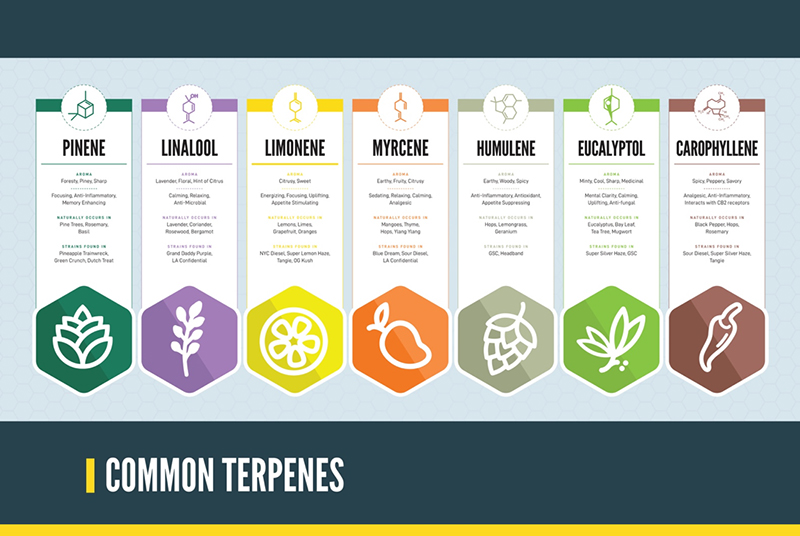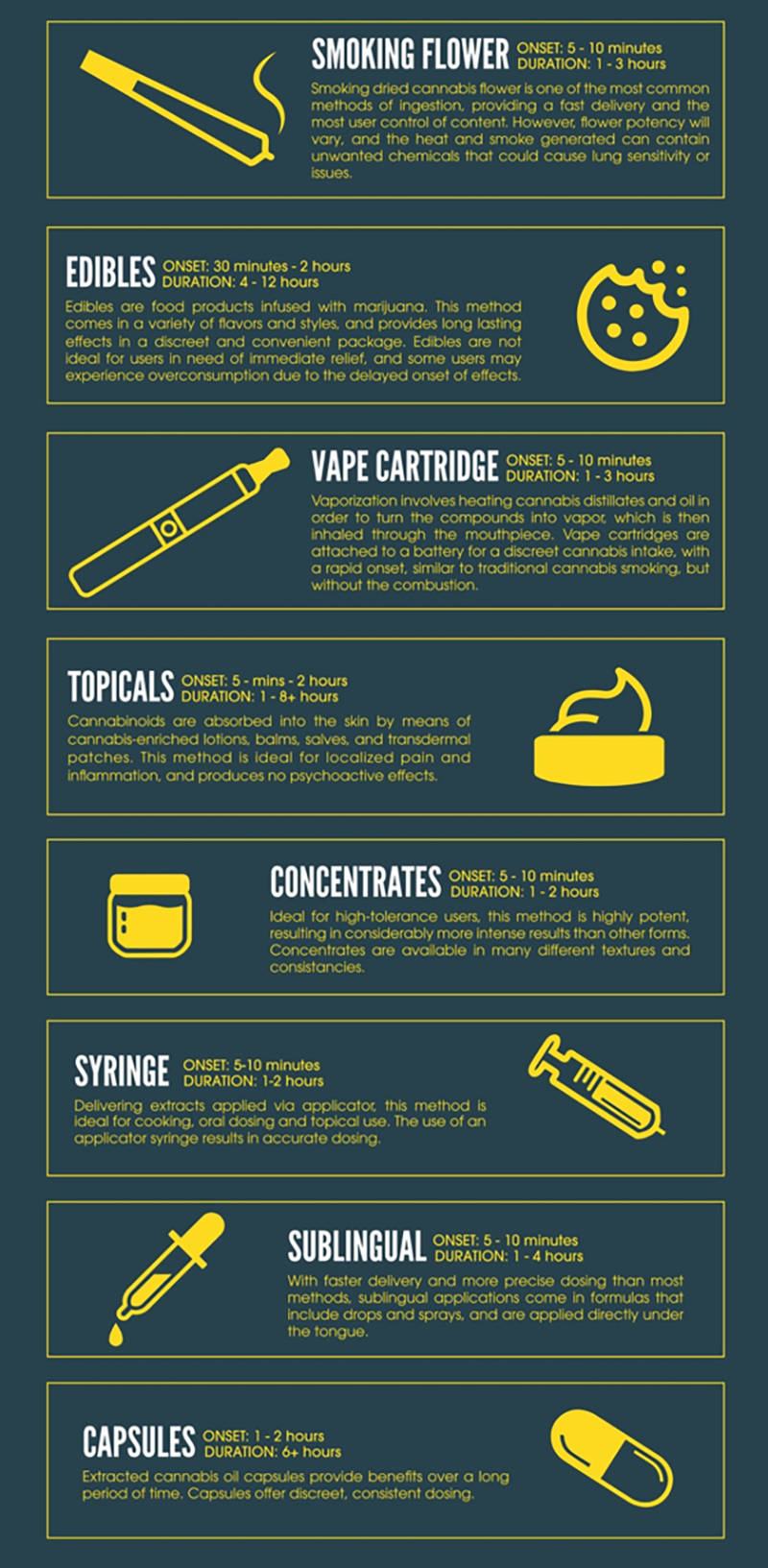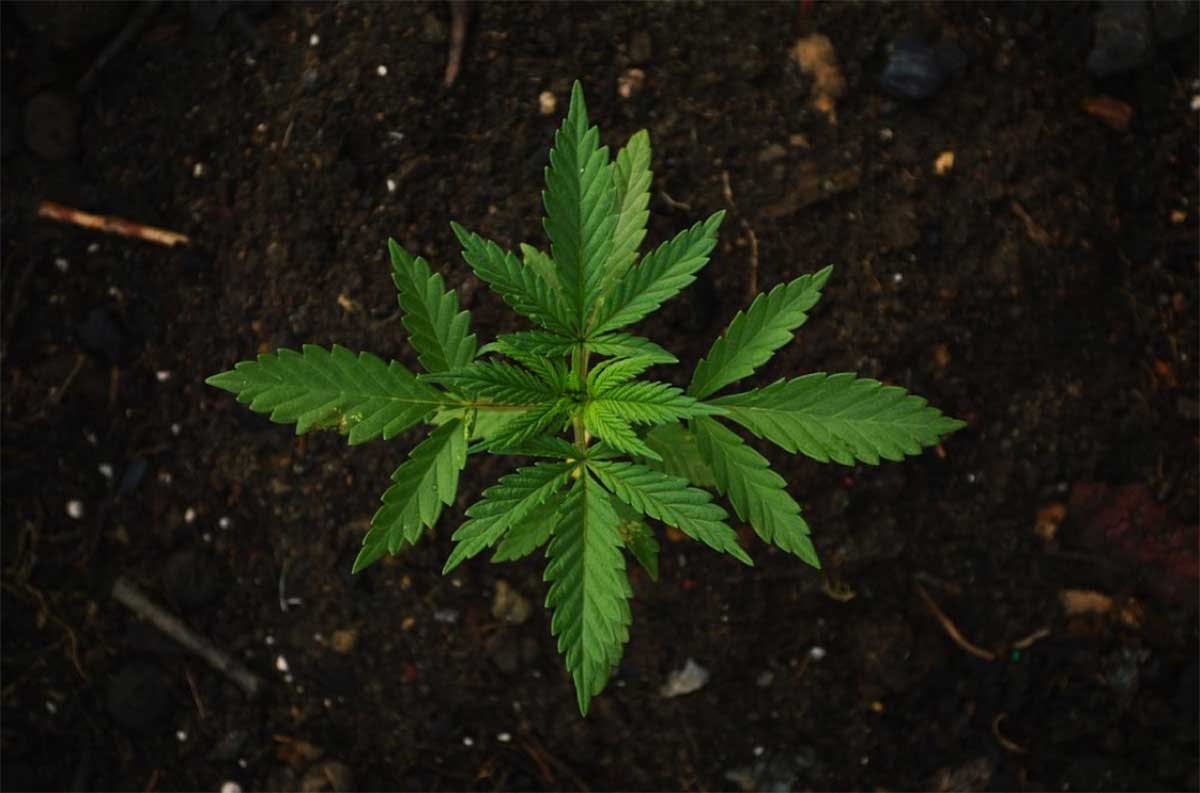Medical Marijuana 101
Here are the need-to-know basics about medical marijuana 101 including terminology, compounds, terpenes, function, methods of administration, and the medical benefits of medical marijuana.
MEDICAL MARIJUANA TERMINOLOGY
Medical Marijuana - The accepted botanical name for the plant. The medical marijuana plant is well documented throughout human history as a valuable resource, including use as food, fuel, fiber, ritual, and medicine. Keep reading for more medical marijuana information.
Hemp -A common name for the medical marijuana plant. This term is typically associated with its industrial use and non-psychoactive products, such as fiber, clothing, paper, seed, food, and oil that is absent of impairing effects.
Marijuana -A common name for the medical marijuana plant. This term is typically associated with the prohibition, legal status, or psychoactive use of the plant.
Medical Marijuana Sativa -A medical marijuana strain reported to have more of an energizing effect. It has been described as uplifting, cerebral, or mentally stimulating. It may be preferred for daytime use or by patients experiencing low energy, fatigue, or depression. It may not be preferred by patients prone to anxiety.
Medical Marijuana lndica -A medical marijuana strain reported to have a more sedating effect. It has been described as a relaxing, calming, full body experience. It may be preferred for night time use or by patients prone to hyperactivity or anxiety.
Hybrid -A medical marijuana (weed) strain that is a cross between sativa and indica strains. Most cannabis strains available today are hybrids, which exhibit selective or balanced characteristics. What's your favorite strains of medical marijuana?
Psychoactive effect -A change in mental-emotional state associated with the use of medical marijuana rich in THC. It is popularly characterized by euphoria, relaxation, happiness, and an overall sense of well-being or what is commonly referred to as being "high."
Psychoactive side effect - Medical Marijuana has been reported to cause impairment, anxiety, panic attacks, psychosis, and complete sedation. These effects are dose dependent, making the psychoactive effect the limiting factor as to how much medical marijuana can be consumed.
CONSTITUENTS OF THE MEDICAL MARIJUANA PLANT
Medical Marijuana is a very unique and complex plant with numerous identified chemical compounds, including over 80 identified cannabinoids, as well as terpenoids, flavonoids, and other botanical compounds. It is understood that all of these components work together synergistically to provide the greatest medical benefit. Varieties of medical marijuana strains contain different constituent profiles, medicinal qualities, and potency. Always stay brushed up on your medical marijuana knowledge.
The following are common chemical compounds that are found in the medical marijuana plant:
Phytocannabinoids - Plant-derived cannabinoid molecules, named after the medical marijuana plant, as that is where they are most abundantly found. "Phyto" is of Greek origin, meaning plant.
Tetrahydrocannabinol (THC) - The most abundant phytocannabinoid. THC is primarily responsible for the psychoactive effect. It has also been reported to be effective for treating nausea and vomiting, stimulating appetite, managing pain, reducing muscle spasms, facilitating sleep, opening airways, decreasing pressure of the inner eye, and relieving mental-emotional stress. THC is also known to cause impairment, sedation, mental confusion, anxiety, and panic attacks in some people. This risk increases with larger doses and higher THC levels.
Cannabidiol (CBD) - The most abundant non-psychoactive phytocannabinoid, CBD does not produce the euphoric effect associated with THC in medical marijuana. CBD has been reported to mitigate THC's euphoric side effects (mental confusion, sedation, anxiety, and psychosis). CBD may also have anti-anxiety effects and many preventive health effects, particularly in neurological, immunological, and inflammatory conditions.
Patients concerned with the medical marijuana plant's psychoactive effects or patients susceptible to mental-emotional disorders or imbalances may prefer CBD-dominant to THC-dominant strains or products, like CBD Oil.
Cannabinoid Acids - Phytocanninoids are initially produced by the medical marijuana plant in the form of a carboxylic acid, specifically Tetrahydrocannabinolic Acid (THCA) and Cannabidiolic Acid (CBDA).
Heating or aging processes are required to activate (i.e. decarboxylate) these cannabinoid acids, turning THCA and CBDA into THC and CBD, respectively. THCA does not cause euphoria until it has been converted to THC through the process of smoking, vaporizing, cooking, curing, etc.
These non-psychoactive cannabinoid acids may have selective health benefits, particularly with respect to antioxidant value, inflammatory conditions, and the immune system. Eating raw or unheated plant products and juicing are ways in which cannabinoid acid constituents can be ingested with less potential for psychoactive side effects.
Cannabichromene (CBC) - Non-psychoactive, anti-inflammatory, anti- microbial.
Cannabigerol (CBG) - Non-psychoactive, analgesic, anti-inflammatory, anti-fungal, anti-microbial.
Tetrahydrocannabivirin (THCV) - Non-psychoactive, anticonvulsant, decreases appetite, improves glucose/insulin function.
Cannabidivarin (CBDV) - Non-psychoactive, anticonvulsant.
Cannabinol (CBN) - Produced from THC oxidation. Sedative, anti-microbial, mild psychoactive effect.
Izzo AA, Borrelli F, Capasso R, DiMarzo V, Mechoulam R. 2009. Non-psychotropic plant cannabinoids: new therapeutic opportunities from an ancient herb. Trends Pharmacol Sci
TERPENES
Terpenes are a large and diverse class of organic molecules found in a wide variety of plants, including medical marijuana, that give each strain its unique aroma and serve as a guide to determine the terpenes effects each strain can have on the body and mind.

HOW DOES MEDICAL MARIJUANA WORK IN THE BODY?
Endocannabinoid system (ECS) -A communication and regulatory system in all vertebrate organisms, named after the medical marijuana plant and its unique cannabinoid constituents. It includes messenger molecules, receptors, and enzymes distributed throughout the body, with the purpose of maintaining balance and health of the individual.
Endocannabinoid receptors -Cell structures that act as specialized gatekeepers. When they are activated they regulate or allow specific changes in the cells, tissues, system, and body.
Cannabinoid 1 (CB1) receptors -Receptors that are located most densely in the central nervous system. They are associated with the regulation of activity within the brain and nervous system.
Cannabinoid 2 (CB2) receptors -Receptors that are located throughout the body most densely associated with the immune system and regulation of immune responses such as inflammation and cell turnover.
Endocannabinoids (messenger molecules) -Natural molecules made by the body that activate cannabinoid receptors. Phytocannabinoids found in the medical marijuana plant mimic their activity and activate the ECS.
METHODS OF CONSUMPTION
There are many different forms of medical marijuana, and multiple ways to consume it. Here are just a few:

The Harvest House of Medical Marijuana blog offers articles about medical marijuana for dispensary shoppers that visit our dispensaries.

